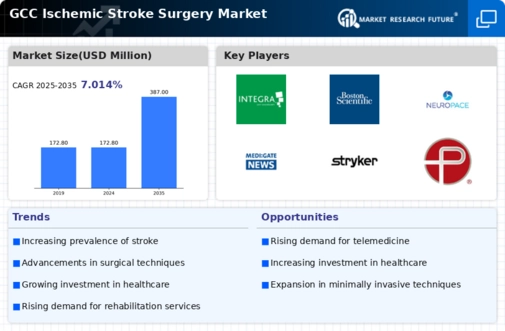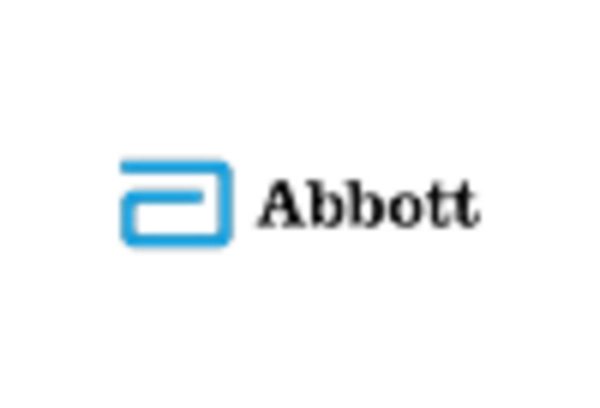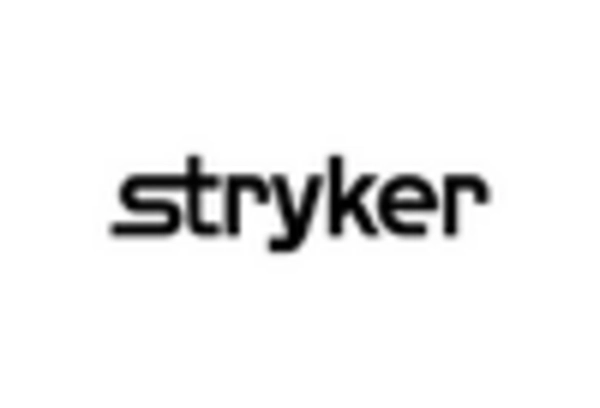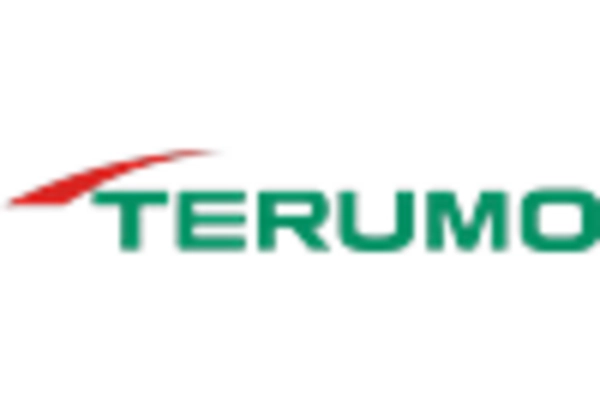Rising Healthcare Expenditure
The increase in healthcare expenditure across the GCC countries is a significant driver for the ischemic stroke-surgery market. With governments prioritizing health as a key area of development, healthcare budgets are expanding. Reports indicate that healthcare spending in the GCC is projected to reach approximately $100 billion by 2025. This financial commitment is likely to enhance the availability of advanced surgical treatments for ischemic stroke patients. As hospitals upgrade their facilities and invest in new technologies, the market for ischemic stroke surgeries is expected to grow. Furthermore, increased funding for research and development may lead to the introduction of innovative surgical techniques, further propelling market expansion.
Advancements in Medical Technology
Innovations in medical technology are significantly influencing the ischemic stroke-surgery market. The introduction of minimally invasive surgical techniques and advanced imaging technologies has improved patient outcomes and reduced recovery times. For instance, the use of robotic-assisted surgeries and neurovascular devices has shown promising results in clinical settings. These advancements not only enhance the precision of surgical procedures but also lower the risk of complications. As hospitals in the GCC adopt these technologies, the market is expected to witness substantial growth. The integration of artificial intelligence in surgical planning and execution may also play a pivotal role in shaping the future of the ischemic stroke-surgery market.
Government Initiatives and Policies
Government initiatives aimed at improving healthcare infrastructure are pivotal for the ischemic stroke-surgery market. In the GCC, various health ministries are implementing policies to enhance stroke care, including the establishment of specialized stroke units and training programs for healthcare professionals. These initiatives are designed to streamline patient care and ensure timely surgical interventions. Additionally, funding allocations for healthcare projects are increasing, which may lead to the development of state-of-the-art surgical facilities. As a result, the ischemic stroke-surgery market is likely to benefit from these supportive policies, fostering an environment conducive to growth and innovation.
Growing Prevalence of Ischemic Stroke
The rising incidence of ischemic stroke in the GCC region is a critical driver for the ischemic stroke-surgery market. According to health statistics, ischemic strokes account for approximately 87% of all strokes, leading to increased demand for surgical interventions. The aging population, coupled with lifestyle factors such as hypertension and diabetes, contributes to this growing prevalence. As more individuals experience ischemic strokes, healthcare systems are compelled to enhance their surgical capabilities. This trend is likely to result in a surge in surgical procedures, thereby expanding the market. Furthermore, the GCC countries are investing in advanced medical facilities to cater to this demand, which may further stimulate growth in the ischemic stroke-surgery market.
Growing Patient Awareness and Education
The rising awareness and education regarding stroke symptoms and treatment options are crucial for the ischemic stroke-surgery market. Public health campaigns in the GCC are effectively educating individuals about the importance of recognizing stroke symptoms and seeking immediate medical attention. This heightened awareness is likely to lead to earlier diagnosis and intervention, which is essential for successful surgical outcomes. As more patients understand the risks associated with ischemic strokes, the demand for surgical procedures may increase. Additionally, healthcare providers are focusing on patient education to improve treatment adherence, which could positively impact the ischemic stroke-surgery market.

















Leave a Comment